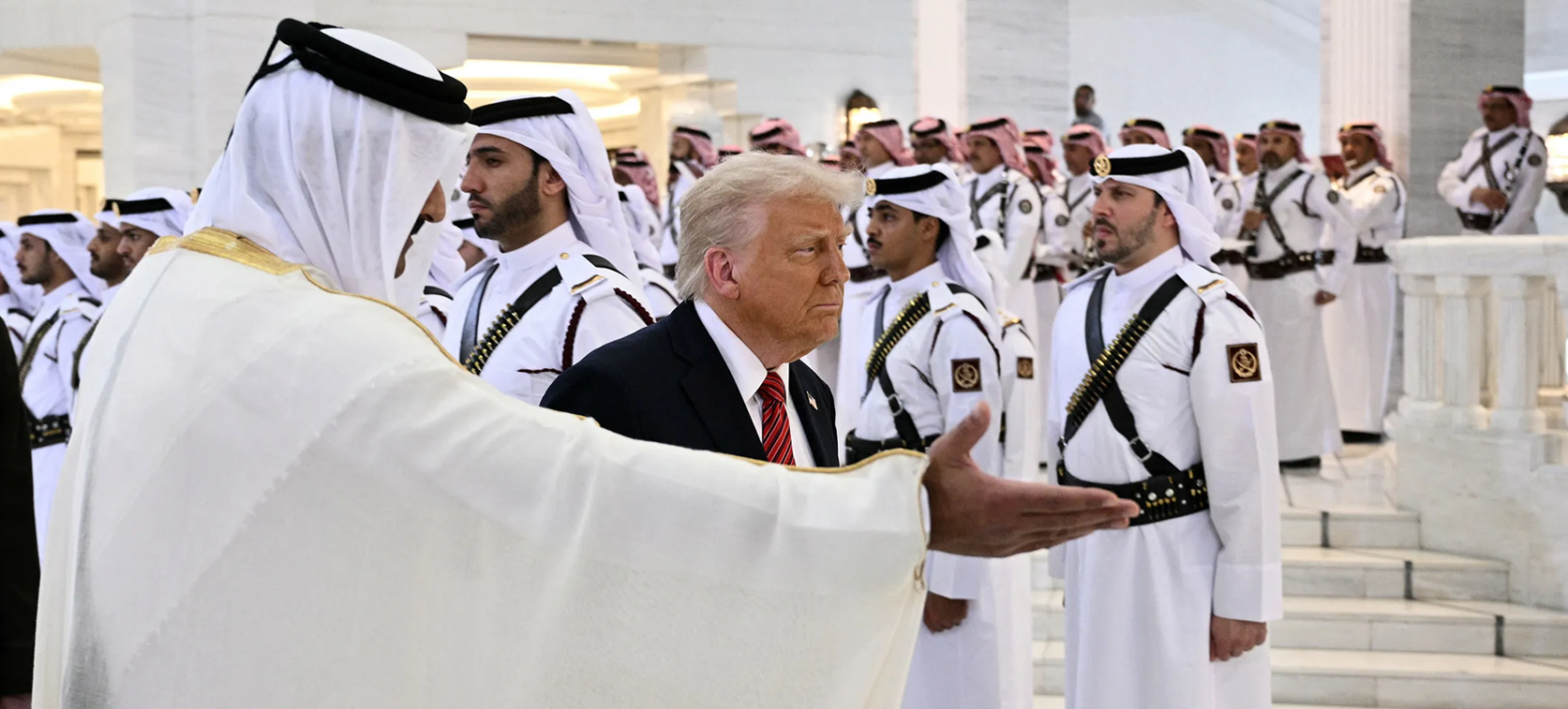For decades, conventional wisdom held that the Global South lacked the capacity to challenge the economic and geopolitical dominance of the United States. However, recent developments—including Donald Trump’s ambitious visit to the Gulf states and Pakistan’s aerial incursion over India—have sparked a fresh wave of political awareness. These events reveal a shifting landscape where emerging powers and regional actors are recalibrating their influence, and not only analysts but ordinary people are beginning to piece together the changing dynamics of global power.
Donald Trump’s recent tour of the Gulf states was less a diplomatic mission than an economic lifeline. The former president, seeking a political comeback, secured over $2.3 trillion in contracts and investment pledges from Saudi Arabia, the United Arab Emirates and Qatar. At first glance, the sums signal enduring American influence. Yet, beneath the surface lies a more fragile reality: an economy and a global strategy that are dependent on the largesse of Gulf monarchies.
America’s national debt exceeds $34 trillion, and its industrial base is under strain. The defence and technology sectors, long pillars of American economic might, are now sustained in large part by foreign contracts, especially from oil-rich Gulf states. These deals serve as a vital injection of capital, propping up manufacturing jobs, shoring up the dollar’s position and maintaining U.S. influence in a world growing ever more multipolar.
But the question arises: what if even a fraction of this Gulf capital had been directed towards reconstruction and development in the war-torn and economically ravaged countries of the Muslim world—Yemen, Syria, Palestine, Sudan and Somalia? The answer offers a striking counterfactual that challenges prevailing geopolitical assumptions.
The Real Cost of Gulf Deals
In Riyadh, Trump finalised arms and economic agreements valued at $142 billion. Qatar committed over $200 billion for aviation, energy and defence contracts, including a record order for Boeing. Abu Dhabi pledged a staggering $2 trillion in artificial intelligence, infrastructure and technology investments, involving companies such as Microsoft and Nvidia.
These contracts are more than commercial transactions; they underpin a U.S. economy grappling with widening trade deficits, a fragile manufacturing sector and mounting fiscal pressures. The Gulf states effectively function as patrons, bolstering American industry and enabling Washington to project power globally.
Absent this influx, the economic and political consequences for the United States would be severe. Job losses in defence-heavy regions, a weakening dollar, and diminished geopolitical leverage would threaten America’s standing at home and abroad.
The Forgotten Five
Meanwhile, Yemen, Syria, Palestine, Sudan and Somalia remain caught in cycles of conflict, humanitarian disaster and underdevelopment.
Estimates suggest Syria requires between $250 billion and $400 billion to rebuild infrastructure devastated by a decade-long conflict. Palestine faces a reconstruction bill exceeding $50 billion amid blockade and occupation. Yemen’s economy has shrunk by over half since 2015, with famine threatening millions. Sudan is plagued by conflict and food insecurity affecting 70% of households. Somalia struggles to raise revenue to provide basic services, constrained by political instability and weak institutions.
Combined, the rebuilding costs of these five states amount to less than a quarter of the Gulf contracts signed with the United States. Redirecting even part of the Gulf capital toward these nations could ignite economic recovery and political cohesion, transforming a fragmented periphery into a strategic bloc.
A Bloc Denied
A united bloc of Yemen, Syria, Palestine, Sudan and Somalia—fueled by this Gulf investment—could become an economic and diplomatic counterweight in the Muslim world. With coordinated efforts, this alliance might achieve economic self-sufficiency, build regional security frameworks independent of Western-led alliances, and assert a collective voice on issues ranging from Palestine to anti-interventionism.
This prospect threatens the established order. For decades, the United States has relied on Gulf monarchies as clients, maintaining influence by perpetuating regional divisions. The absence of such a bloc facilitates continued foreign intervention and economic dependency.
The Stakes for America
If Gulf investment were diverted southward, America would lose more than lucrative contracts. Its strategic position in the Middle East and Horn of Africa would erode, as would its capacity to shape regional security and economic arrangements.
The petrodollar system that sustains global dollar dominance could falter. Defence companies reliant on Gulf orders would contract. The United States would confront a hollowed-out influence, exposed by its dependence on a dwindling set of allies.
Trump’s Gulf tour, therefore, reveals less strength than fragility: a global hegemon straining to maintain relevance by selling arms and technology to client states. The Gulf monarchies, flush with capital, continue to invest in American industry and security, propping up an empire in slow decline.
A Different Path
Had the Gulf states chosen to invest in their neighbours’ recovery rather than in foreign arms and AI ventures, the geopolitical map could be redrawn. The empowerment of Yemen, Syria, Palestine, Sudan and Somalia would challenge the foundations of Western dominance in the region and offer a new vision of Muslim solidarity, economic renewal and political independence.
That future remains possible. For now, America has bought itself time. But history suggests empires that depend on borrowed strength rather than genuine renewal seldom endure. The question is no longer what is possible? It’s who dares to choose it.
Need Help?
-
[email protected]
-
Follow us on Instagram
-
Follow us on TikTok
